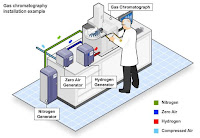Hot Melt Adhesives and Available Types Used in Industrial Manufacturing
Industrial hot melt adhesives are polymer-based thermoplastic resins that, when melted, are used to bond materials together. Hot melt adhesives are comprised of one or more base polymers combined with tackifiers (which provide stickiness to the adhesive), plasticizers (to provide greater flexibility), and antioxidants (for protection against degradation) to allow for stability, adhesion, and flexibility.
Industrial hot melt is available in a variety of forms, including granular or powder hot melt blocks, pellets, bags, cakes, drums, and pillows. These materials are solid at room temperature, and then heated, melted, and dispensed for a variety of industrial applications. As the adhesive returns to room temperature, a strong bond is created, adhering the manufacturing components together.
Hot melt can be dispensed as a liquid or, by introducing an inert gas (such as nitrogen) to the hot melt, as a foam.
Industrial Hot Melt Applications
In either liquid or foam form, hot melt adhesive is used across a wide variety of industries including aerospace; automotive; product assembly; furniture making, cabinetry, and upholstery; product packaging; book binding; and non-woven sanitary hygiene products.
Aerospace and automobile manufacturers utilize hot melt adhesives for potting electronics (a process used to protect sensitive components from impact or vibration), as well as sealing rivets, seams, and joints. Additionally, hot melt foam is used in airplanes and cars as insulation around doors and windows to reduce vibrations and noise, as well as in seat assembly.
The pages in books and magazines are kept securely bound together using HMAs. The packaging industry depends on a strong adhesive bond to keep the flaps of corrugated boxes and cartons securely closed.
Non-woven personal hygiene products are manufactured by utilizing hot melt adhesives throughout the manufacturing process, including adhering the elastic strands in the leg openings and waistbands, bonding the fabric layers together to secure and stabilize the wetness core, and affixing the fastening tapes to the waistband.
Charring
Charring is akey concern when working with hot melt adhesives, as char (degraded adhesives that have oxidized, hardened into a gel, and been blackened and burned) can negatively affect the adhesives, cause equipment failure, and lead to a shut-down in production.
Key causes of charring include overheating (typically as a result of either using a temperature that is too high for a particular hotmelt, excessive heating times, or incorrect melt tank size); oxidation (exposing the adhesives to too much oxygen), and contamination (from dirt, dust and other materials that fall into the hotmelt and burn).
Once formed, the char can break off into pieces that may clog filters and stop up spray and bead nozzles. The pieces of char can work their way onto the materials to be bonded, leaving marks, streaks, and uneven surfaces. Eventually, bits of char may get into hoses and pumps, breaking seals and scoring and damaging hoses and pump walls.
Why Nitrogen is Used for Hot Melt Adhesive
To reduce potential damage from charring, hotmelt operators may elect to blanket the adhesives with nitrogen (N2) in a process by which nitrogen, an oxygen depleting gas, is piped into the space between the hotmelt adhesive and the top of the hopper or melt tank. The nitrogen blanket protects the adhesive by creating a barrier against falling debris, and it also removes oxygen and moisture which may cause the hotmelt to oxidize and form char .
Oxygen Monitors Improves Quality Control and Helps Protect Employees
To preserve the integrity of the hot melt while blanketing with nitrogen, employees must maintain proper oxygen levels within hoppers or melt tanks, as too much oxygen can cause oxidation. Proper oxygen monitoring equipment should be placed inside melt tanks to measure and control oxygen levels. A nitrogen leak could lead to failure of the nitrogen blanket, which could compromise the integrity of the adhesives.
Moreover, wherever nitrogen is used, the possibility of nitrogen leaks poses potential risks to humans. Since nitrogen displaces oxygen, a leak could deprive the air of oxygen, thereby creating a possible health hazard for personnel. When there is not enough oxygen in the air, persons working in the area can become disoriented, lose consciousness, or even suffocate due to the lack of oxygen. Since nitrogen lacks color and odor, there is no way, absent appropriate monitoring, for employees to detect a leak.
Best practice calls for oxygen deficiency monitors to be installed anywhere there is a risk of gas leaks. As such, oxygen monitors should be placed wherever nitrogen is stored, and in all areas where nitrogen is used.
PureAire O2 Deficiency Monitors










